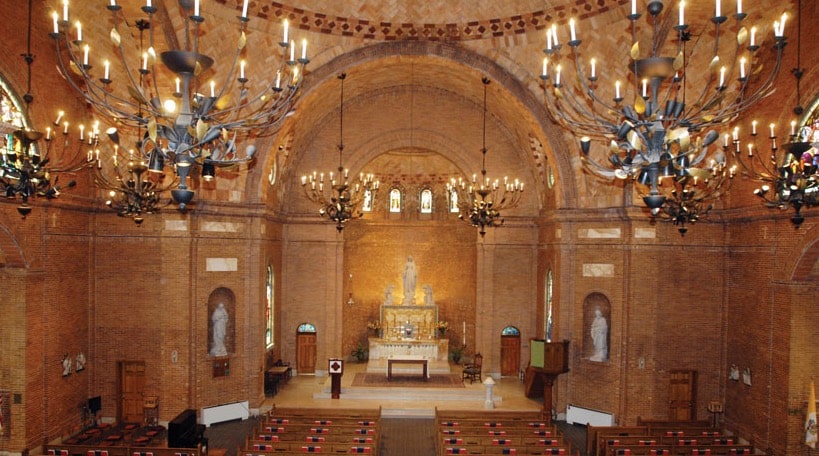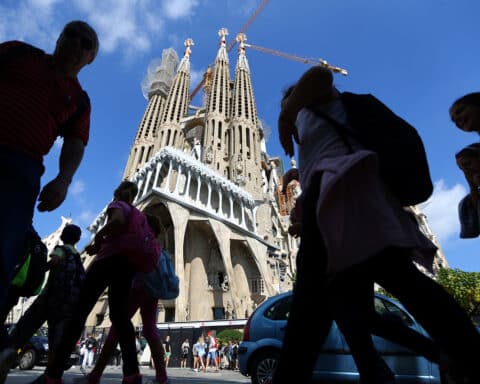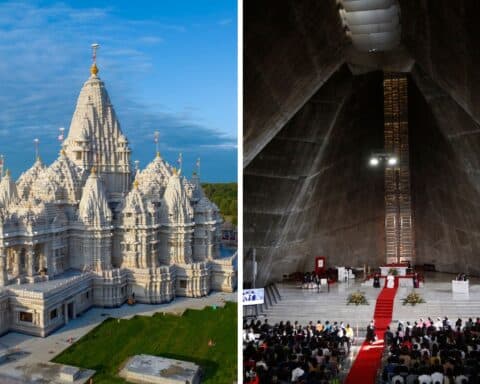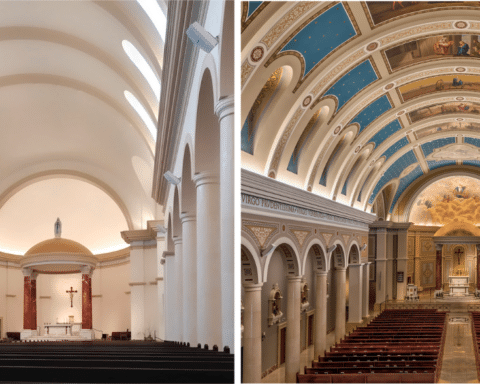God is not “the Great Architect,” and he doesn’t deal in blueprints and building committees, but did you know God told us how to build a church?
It’s in the Bible. If we believe the sacred Scriptures are the inspired word of God, then we have to take seriously the passages in the Old Testament where God gives directions for building; first the tabernacle — that portable worship tent the Hebrews used during their wilderness wanderings, and then the temple in Jerusalem.
God gives Moses instructions for building the tabernacle in the Book of Exodus. The materials, dimensions and furnishings for the Hebrews’ portable worship tent are all prescribed.
Five hundred years later God instructed David’s son, King Solomon, to build the great temple in Jerusalem. Although Solomon’s temple was much more splendid than the simple tabernacle of Moses, it still followed the same divinely inspired pattern.
In the New Testament, the Book of Hebrews says about the Jewish priests in the temple: “They worship in a copy and shadow of the heavenly sanctuary.” This is why Moses was warned when he was about to build the tabernacle: “See that you make everything according to the pattern shown you on the mountain” (Heb 8:5).
It’s simple: Moses was given a glimpse of heaven when he was on Mount Sinai, and the tabernacle was an earthly reflection of what he’d seen. The tabernacle and the temple were built according to a particular pattern, and this pattern was important because it gave the worshippers a glimpse of the heavenly reality. To enter into the tabernacle or Solomon’s temple was to step across the threshold to an in-between world — a sacred space that was a doorway to heaven itself.
Building Bible Land?
One of the exciting aspects of a visit to Disneyland or Universal Studios is to step from one fantasy land to another. Here you can visit Harry Potter’s Hogwarts, there you can see Cinderella’s castle. Here you can troop through the Swiss Family Robinson treehouse, there you can be swept up into a Jurassic Park Adventure. The different worlds are created out of plaster, plastic and paint to give you an exciting but artificial experience of fun and fantasy.
Is that what we are supposed to do when thinking about sacred architecture? Are we supposed to read the Old Testament and re-create Moses’ tabernacle or Solomon’s temple? Are we supposed to build Bible Fantasy Land? Of course not. A good Catholic Church is not a theme park reproduction of Solomon’s temple.
However, there are some principles established in the Book of Exodus that Catholic architects have always followed. The key word here is “pattern.” There was an underlying pattern that both the tabernacle and temple followed, and it is this pattern that provides the basic structure for Christian churches. The tabernacle not only gives us the pattern for a Catholic Church, but reminds us what a Catholic Church is for.
Temple or auditorium?
The first question to ask is, “What is a church for?” In the Bible, the sacred space is a temple not an auditorium. An auditorium is a large space for people to gather to hear a speech or see a performance. A temple, on the other hand, is the dwelling place for God.
At the center of the Jewish tabernacle was the Holy of Holies. This was a cube shape that housed the Ark of the Covenant — that’s right, the artifact in the Indiana Jones film. The Ark of the Covenant was a gold-covered wooden box that held the tablet of the Ten Commandments, a jar of manna and the priest Aaron’s rod. It had a gold-covered lid and was flanked by two angels with wings outspread. This golden box was called “the mercy seat” and was understood to be reflective of the throne of God.
Therefore the tabernacle, and later the temple in Jerusalem, were first and foremost the house of God. Since the Second Vatican Council, many Catholic architects have turned away from these historic and scriptural realities to build churches that are not primarily the house of God, but the meeting place for God’s people. A church design that focuses on the gathering of the people of God instead of the presence of God may be useful, but it contradicts the great tradition and the instructions of God himself as to what a temple must be.
Three steps
Did you know it is traditional to have three steps up from the nave of the church to the sanctuary, and from the sanctuary up to the altar? Why three steps and not two or four — or more?
| Papal Letter |
|---|
|
In 1999, Pope St. John Paul II wrote an apostolic letter to artists (including architects) detailing the importance of their work to the Church. Here is an excerpt: “The Church needs architects, because she needs spaces to bring the Christian people together and celebrate the mysteries of salvation. After the terrible destruction of the last World War and the growth of great cities, a new generation of architects showed themselves adept at responding to the exigencies of Christian worship, confirming that the religious theme can still inspire architectural design in our own day. Not infrequently these architects have constructed churches which are both places of prayer and true works of art.”
|
Three steps echo the threefold structure of the tabernacle and temple, and lay down God’s basic pattern for a church. The tabernacle and temple consisted of three sections — each growing in importance and significance. The first part was the outer court. This is where the people gathered and where the sacrifice was made. The second part was the Holy Place where only priests could go. This is where the table with the sacred bread was placed. The sacred candlestick — the menorah — was there as well as the altar of incense. At the back of the Holy Place was the Holy of Holies with the Ark of the Covenant.
From time immemorial, this threefold pattern was replicated in Catholic Churches. Without slavishly copying the tabernacle or temple, and in a multitude of different styles and manners, the simple threefold pattern of architecture was followed.
The three sections of the church were arranged in a linear progression and with steps going up from one stage to the next to indicate the progressive nature of our relationship to God. We are on a journey to go further up and further into the presence of God.
When a church is built in a round or fan shape, and the tabernacle shunted off to a side chapel, all this sacred tradition and the pattern for a church given by God is lost.
The main problem is not that modern church builders have built monstrous Catholic churches, but that they seem to have done so without any real knowledge of the great tradition. They have simply started building a church as they might build any other practical building, thinking a church is simply a fancy auditorium; and as long as they fit in enough seats and have a good sound system and working toilets everything will be fine.
Instead we need to dig deep into our traditions and build new churches that are not only effective meeting places for the people of God, but also beautiful temples to house the presence of God himself.
Father Dwight Longenecker is the pastor of Our Lady of the Rosary Church in Greenville, South Carolina.





